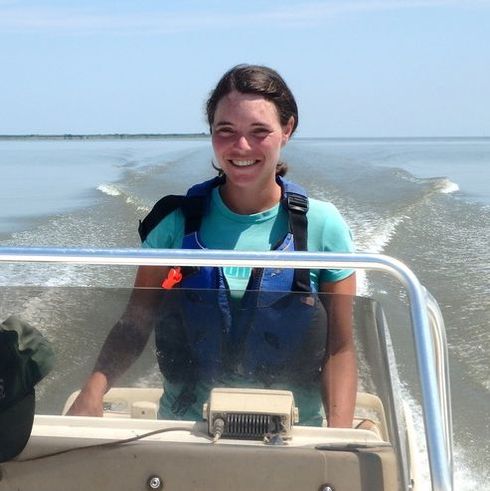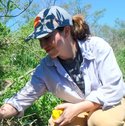This winter has involved lots of writing, presenting, and traveling. Here's the highlight reel...
- I recently finished a report covering our first few seasons of data collection, available here.
- In February I presented an oral paper and a poster at the annual meeting of the Pacific Seabird Group in San Jose, CA.
- Social media guru Yvan created impressive graphics and tweeted a summary of our results as part of the first annual World Seabird Twitter Conference (#WSTC1) last month. (Belatedly, you can now follow us on Twitter: @project_pelican! Nice to meet you, 21st century.)
- In March, I was back West in Portland (OR), running lots of stress hormone assays with Katie O'Reilly at UP. Hopefully all of our chopping, shaking, and titrating will pay off in the form of some neat results.
- In early April, Yvan and I both be presented at the Texas Bays and Estuaries Meeting in Port Aransas, covering results to date of our work along the Texas coast.
We are now braving yet another round of storms in Florida, waiting for the field season to kick off in earnest. The pelicans are a few weeks behind last year's schedule, giving us time to find some new colonies and work out the kinks with our new inflatable motorboat, the latest of which is exploding launch wheels. That sounds a lot more exciting than it actually is.
- I recently finished a report covering our first few seasons of data collection, available here.
- In February I presented an oral paper and a poster at the annual meeting of the Pacific Seabird Group in San Jose, CA.
- Social media guru Yvan created impressive graphics and tweeted a summary of our results as part of the first annual World Seabird Twitter Conference (#WSTC1) last month. (Belatedly, you can now follow us on Twitter: @project_pelican! Nice to meet you, 21st century.)
- In March, I was back West in Portland (OR), running lots of stress hormone assays with Katie O'Reilly at UP. Hopefully all of our chopping, shaking, and titrating will pay off in the form of some neat results.
- In early April, Yvan and I both be presented at the Texas Bays and Estuaries Meeting in Port Aransas, covering results to date of our work along the Texas coast.
We are now braving yet another round of storms in Florida, waiting for the field season to kick off in earnest. The pelicans are a few weeks behind last year's schedule, giving us time to find some new colonies and work out the kinks with our new inflatable motorboat, the latest of which is exploding launch wheels. That sounds a lot more exciting than it actually is.
Meanwhile, we've managed to visit a new site for this year: Gaillard Island, Alabama, set in the reddish-blue waters of Mobile Bay. After a mainland orientation and some cautionary tales from Dr. John Dindo, of Dauphin Island Sea Labs, we were on our own to explore. Even by our Texas standards, the island is HUGE, a pizza slice of dredge material measuring two miles on each of its long sides and one mile along the crust. Not only is it the largest single Brown Pelican nesting site in the Gulf (over 6,000 pairs), but it also boasts an advanced drainage system, miles of wetlands packed with ducks and geese, and dense, fragrant groves of trees.
Before you start thinking about planning your next vacation there, I should also mention its high densities of mosquitoes, hog skulls, giant dead fish, and duck decoys, all of which we discovered while walking the island's perimeter.
In any case, should be an exciting summer. A parting Florida shot to continue the sea life theme...


 RSS Feed
RSS Feed
